Tags :: Fantasy
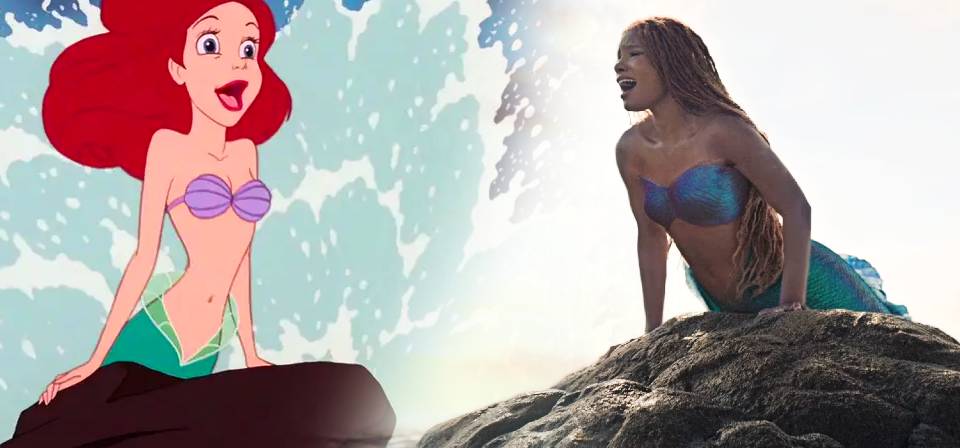
A deep dive: The Little Mermaid then and now
There’s something profoundly melancholy about Disney returning, in its present state of creative exhaustion and corporate decadence, to The Little Mermaid — the nucleus from which the entire Disney renaissance exploded, in a way along with everything that has followed.

Groundhog Day at 30 and the riddle of Bill Murray
Thirty years on, the spiritually evocative, time-bending comedy is as beloved as ever, but its legendary star has been subjected to new scrutiny over reports of inappropriate behavior.
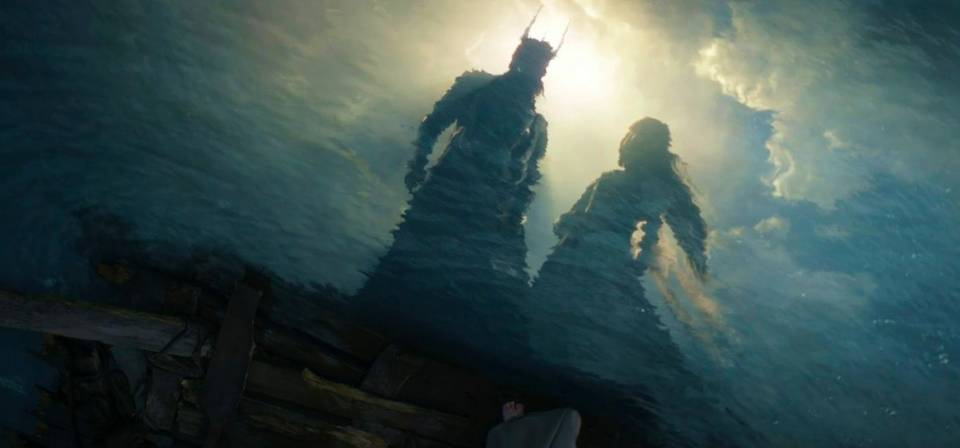
The Rings of Power at the end of season 1
Season 1 ended for me closer to the quiet end of the whimper-bang spectrum than I had hoped. Yet the highs of the season’s second half offer ongoing reason for sustained interest.

The Rings of Power: Season 1 at the halfway mark
Four episodes in, the lavish Amazon Prime series is delivering on at least some of its promise, but there’s room for improvement.

A new foray into Middle-Earth: The Rings of Power
A Game of Thrones–ification of Tolkien? More Hobbit trilogy excess? Though not without missteps, Amazon’s ambitious Lord of the Rings prequel series gets off to a fairly promising start.
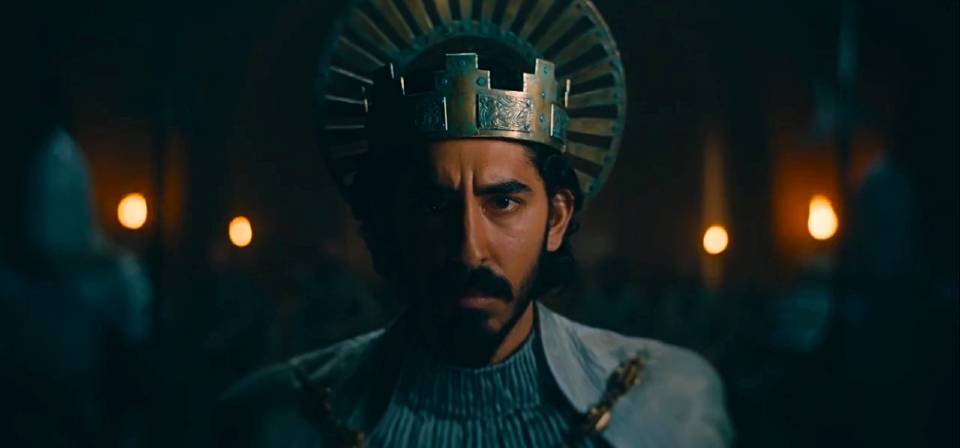
A deep cut: The Green Knight
After the library of books that is the Bible, no literary corpus means more to me than Arthuriana, and no Arthurian work means more to me than Sir Gawain and the Green Knight.
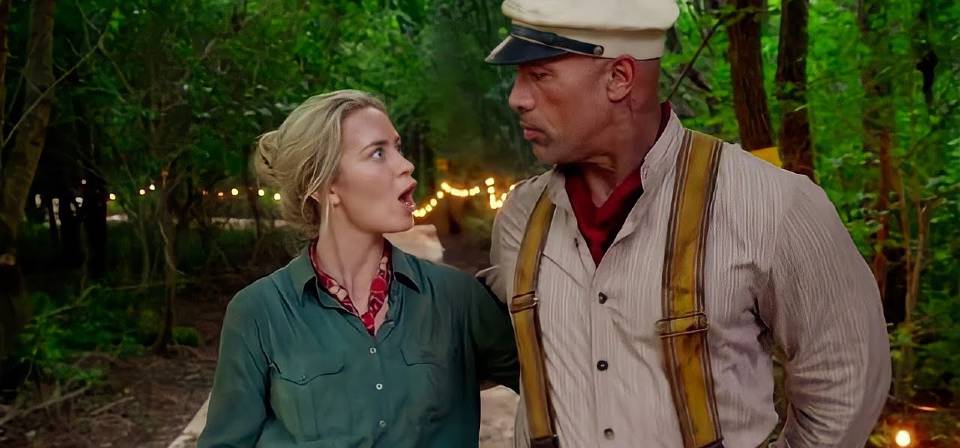
Jungle Cruise (2021)
Dwayne Johnson and Emily Blunt are highly watchable, but Disney’s latest theme-park movie trails haplessly in the wake of Pirates of the Caribbean without a ghost of its inspiration.
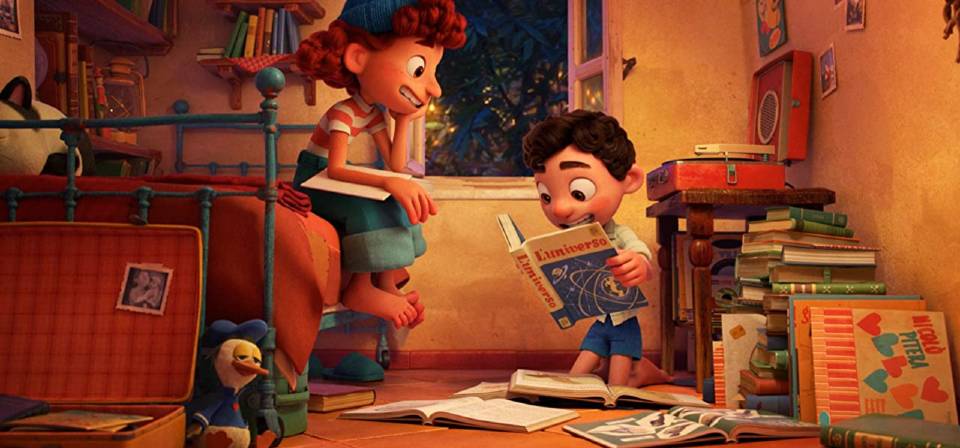
Luca (2021)
In Pixar’s Luca, a gentle, overtly Miyazaki-esque coming-of-age period piece struggles under the heavy weight of iron-clad Disney/Pixar formula requirements and story beats. The charming elements work well enough to carry the film, but only just.

Raya and the Last Dragon (2021)
If Disney’s Raya and the Last Dragon seems familiar, that might be because … well, because of echoes of a lot of things, really.

Soul (2020)
Pete Docter’s Soul is Pixar’s third straight original feature, following Coco and Onward, that is explicitly about death, finality, and, in some way, what lies beyond.
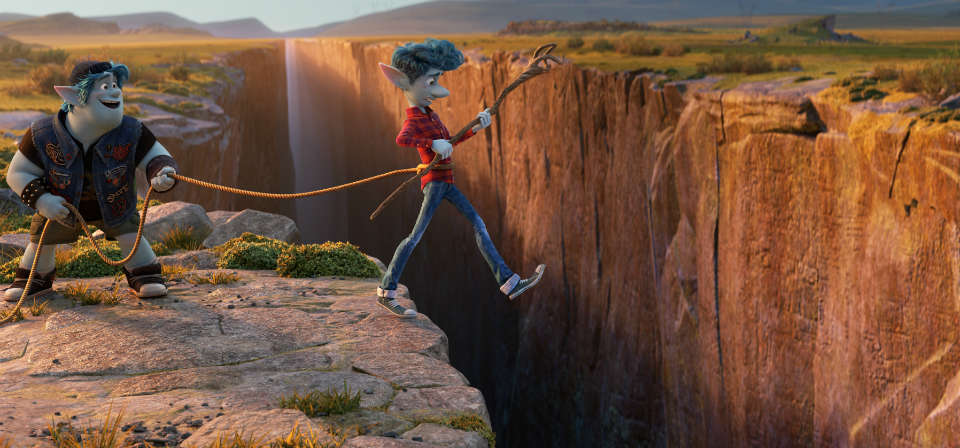
Onward (2020)
Pixar’s movies tend to play as metaphors for the creative rise and fall of Pixar itself. When someone says “Maybe this place isn’t as adventurous as it used to be,” it’s hard not to hear an echo of the filmmakers’ voices.
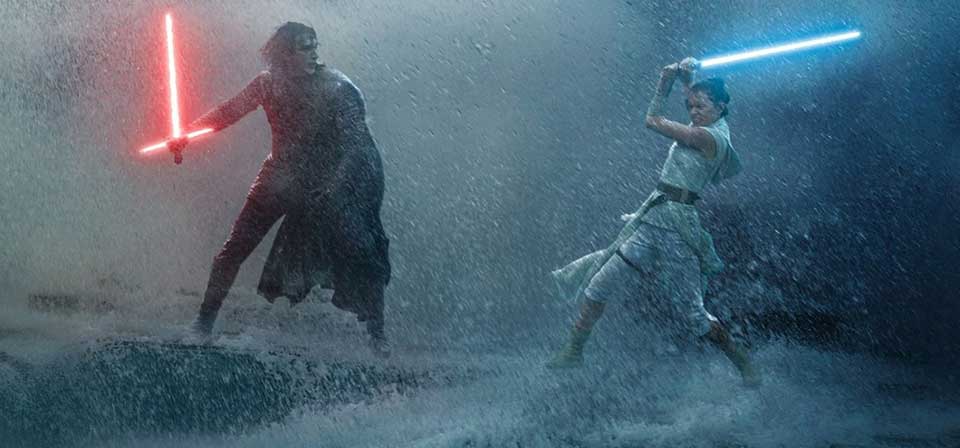
Star Wars: Episode IX – The Rise of Skywalker (2019)
Let’s face it, they could play John Williams’ ominous “Imperial March” over scenes of Uncle Deadly from the Muppets lobbing Green Goblin pumpkin-bombs at Scrat the saber-squirrel (I mean, they literally could, legally, and you could watch it on Disney+ forever and ever), and many of us would still feel emotions stir.
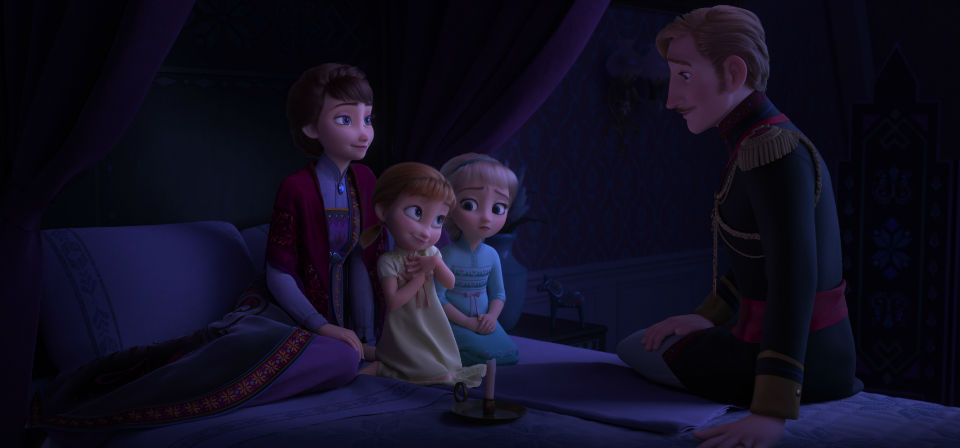
Frozen II (2019)
Anna and Elsa’s relationship is a major improvement on the first film, but in almost every other way this sequel is lost in the woods.
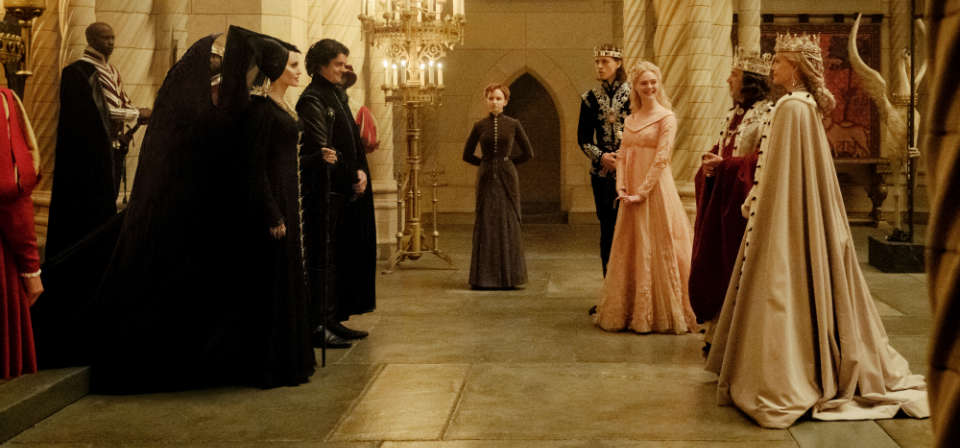
Maleficent: Mistress of Evil (2019)
It’s tempting to suppose that Maleficent: Mistress of Evil opening in the wake of Columbus Day isn’t a coincidence.
![A Dog’s Journey [video]](/uploads/articles/dogsjourney.jpeg)
A Dog’s Journey [video] (2019)
Who is the target audience for Precious Moments from hell, or at least from a bad country song?

Aladdin (2019)
It’s the story you know already, almost exactly. They say the lines and sing the songs, the same songs, almost exactly. It’s a good story and they’re good songs. There are no spoilers in this review because how could there be?
![Fantastic Beasts: The Crimes of Grindelwald [video]](/uploads/articles/fantasticbeasts2-vid.jpg)
Fantastic Beasts: The Crimes of Grindelwald [video] (2018)
I swear I am not making any of this up. What else can I say?

The Nutcracker and the Four Realms (2018)
There’s something genuinely depressing about seeing one of the most audacious experiments in animation history used not for actual inspiration, but as a kind of scrap heap for spare parts.
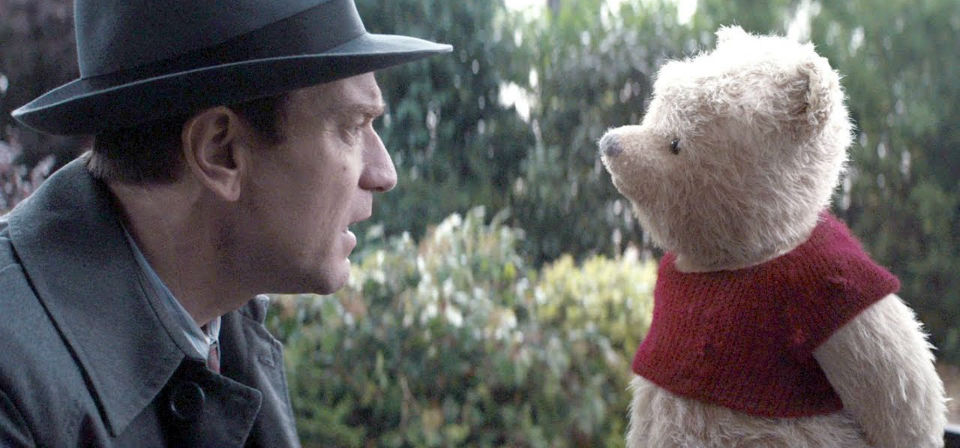
Christopher Robin (2018)
When such movies are done well, you get, say, The Incredibles or John Favreau’s Chef. When they aren’t, you get Jim Carrey in Mr. Popper’s Penguins or Steven Spielberg’s Hook — possibly the closest analogy for Christopher Robin, though Hook, for all its flaws, was clearly a personal film for Spielberg, whereas Christopher Robin feels cobbled together from bits and pieces of other movies without a cogent vision of its own.

A Wrinkle in Time (2018)
“If it’s bad art,” Madeleine L’Engle once wrote, “it’s bad religion, no matter how pious the subject.”
![The Shape of Water [video]](/uploads/articles/shapeofwater.jpeg)
The Shape of Water [video] (2017)
Not the year’s better film starring Sally Hawkins as a handicapped dreamer with an inarticulate, seemingly almost subhuman lover.

Paddington 2 (2018)
I don’t want to review Paddington 2: I want to live in it, and invite you to live in it with me.
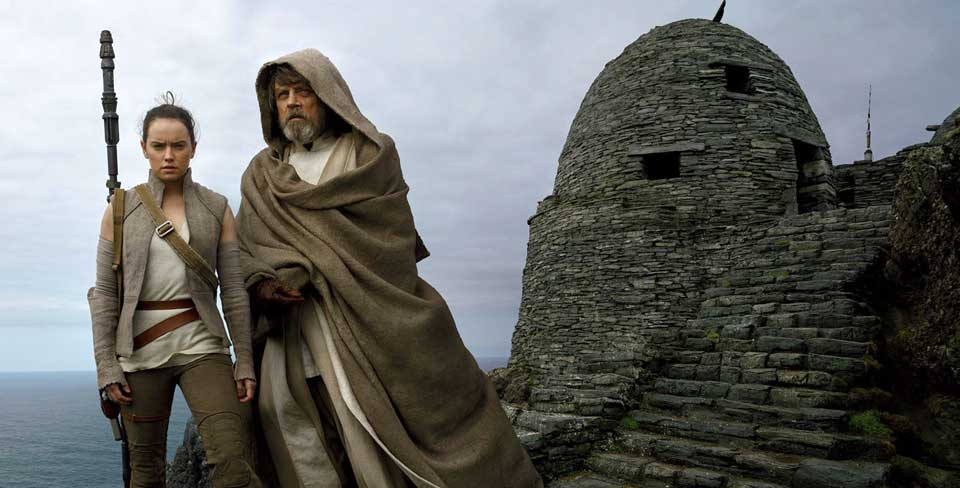
Star Wars: Episode VIII: The Last Jedi (2017)
Star Wars: Episode VIII — The Last Jedi is a strange beast: a swashbuckling action movie that is deeply skeptical of derring-do; a middle movie that works better as riff and commentary on the original source material than as a sequel to its immediate predecessor.
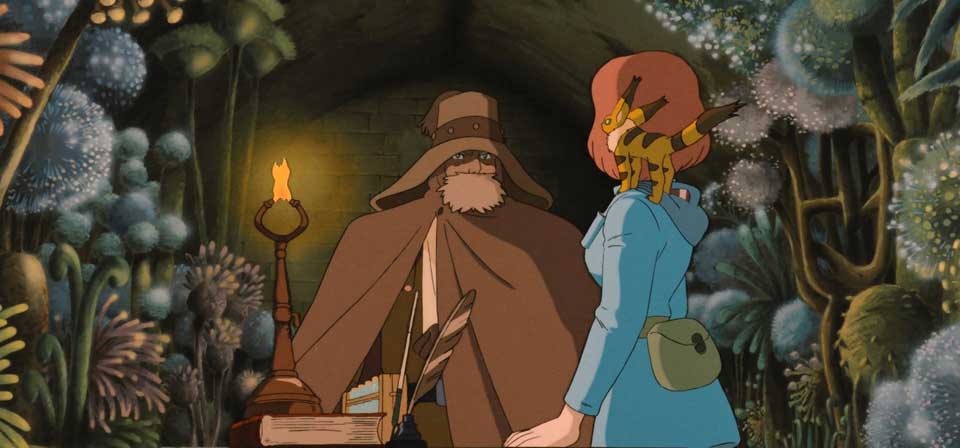
Nausicaä of the Valley of the Wind (1984)
(Reviewed by Sarah E. Greydanus) Nausicaä of the Valley of the Wind may be the quintessential Hayao Miyazaki film — not necessarily his best, but the most comprehensive assortment of his characteristic themes and motifs.

King Arthur: Legend of the Sword (2017)
However Arthur himself is depicted, the Arthurian hero (be it Gawain, Bedivere, Perceval, Lancelot, Galahad or Arthur himself) is a man who stands for an ideal or a cause … If you can’t manage this much, you aren’t reinventing the myth — you’re simply committing an act of cultural vandalism.
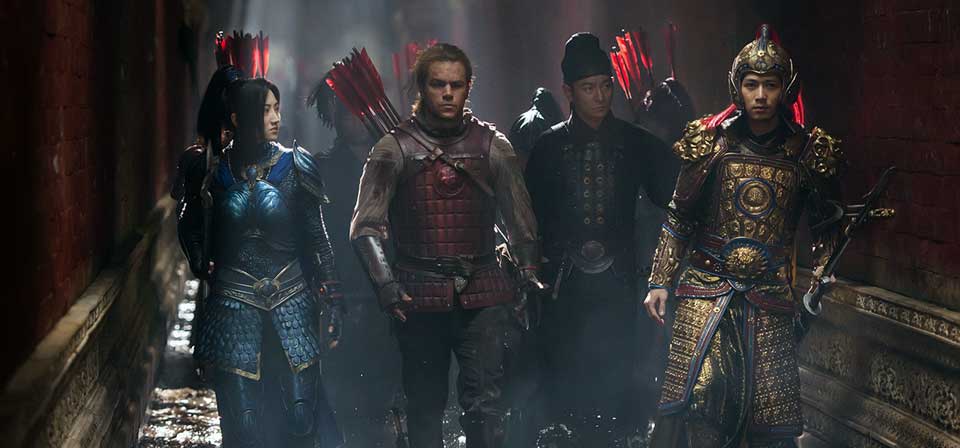
The Great Wall (2017)
The Great Wall is one of those movies that is more interesting for what it portends and the discussion around it than for what is actually onscreen. Not that what is onscreen, in the most literal sense, is bad or uninteresting.
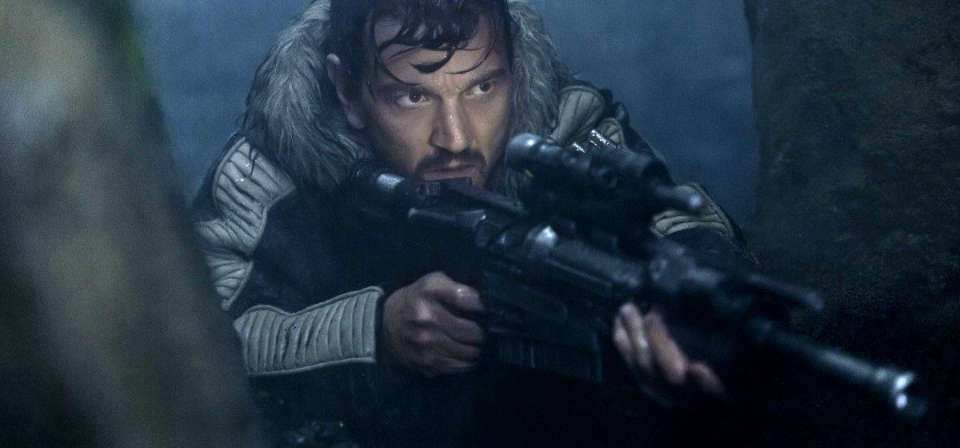
What we lose when Star Wars goes to the Dark Side
Even features come with trade-offs, and the Marvelization of Star Wars is no exception. This might not be as clear in The Force Awakens — about as pure a work of nostalgia and homage as can possibly be contrived short of a shot-for-shot remake — as it is in Rogue One, where the Marvel-style engineering is more obvious.

Spirited Away (2001)
No film in Miyazaki’s oeuvre haunts me like Spirited Away. One reason is the evocation of a seemingly impenetrable, incalculable world with rhythms and rituals that seem all the more opaque and unnerving because they are routine and transparent to those that are of that world.

Moana (2016)
It would be going too far to say that Moana combines everything I enjoy about contemporary Disney with everything I dislike, but it’s got quite a bit of both.
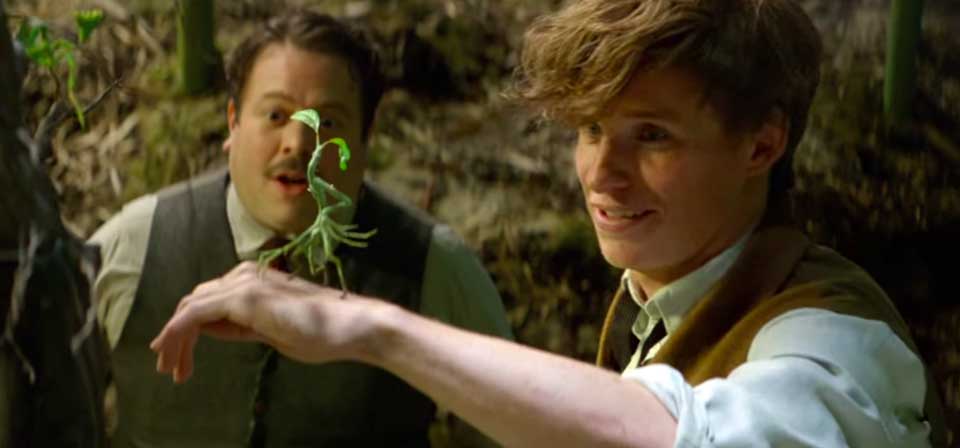
Fantastic Beasts and Where to Find Them (2016)
The fact is, moving from the Harry Potter films to Fantastic Beasts feels a bit like moving from the original Star Wars trilogy to the Star Wars prequels.

Miss Peregrine’s Home for Peculiar Children (2016)
1999 was a very good year for film, and how much more peculiar Tim Burton’s Miss Peregrine’s Home for Peculiar Children might have been had it come out that year, before the X-Men and Harry Potter franchises were launched in 2000 and 2001, respectively.
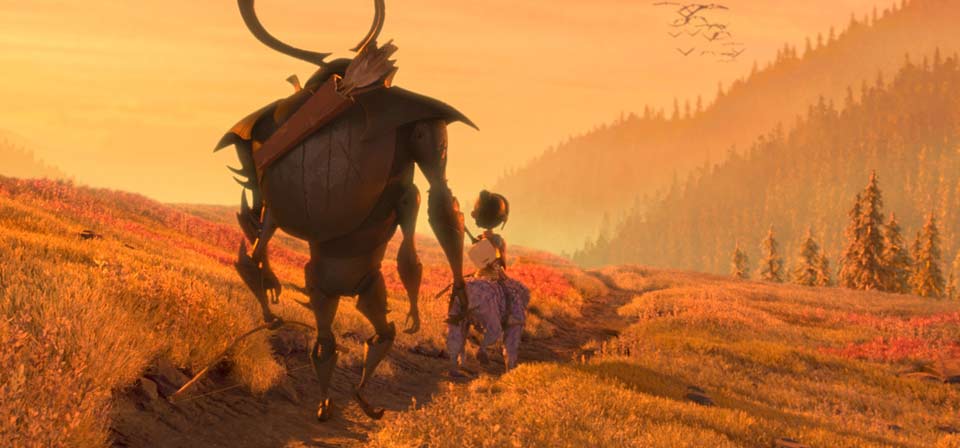
Kubo and the Two Strings (2016)
Kubo and the Two Strings comes close to being a masterpiece, and one of the two best American animated films in years, the other being Pixar’s Inside Out.
![Warcraft [video]](/uploads/articles/warcraft.jpg)
Warcraft [video]
This may be the first movie I’ve ever seen where I got more out of reading the Wikipedia entry afterwards.
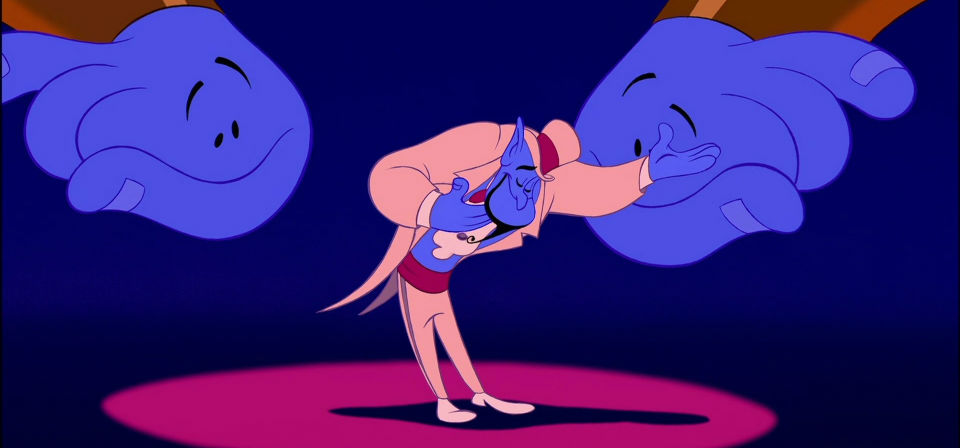
Aladdin (1992)
Disney’s Aladdin does more than give Williams an opportunity to let loose the comic giant inside him: It offers the Disney animators perhaps their greatest creative challenge, and inspiration, in over half a century.

Song of the Sea (2014)
Like Miyazaki, Tomm Moore isn’t afraid to take the time to breathe deeply, savor moments of silence and beauty, and open the door to wonder and mystery.
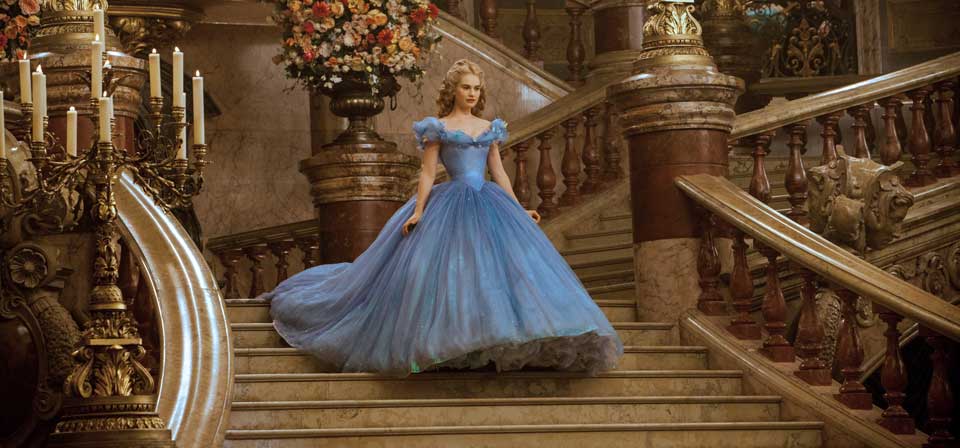
Cinderella (2015)
Kenneth Branagh’s Cinderella is such a gallant anachronism, such a grandly unreconstructed throwback, that it offers, without ever raising its voice, a ringing cross-examination of our whole era of dark, gritty fairy-tale revisionism.
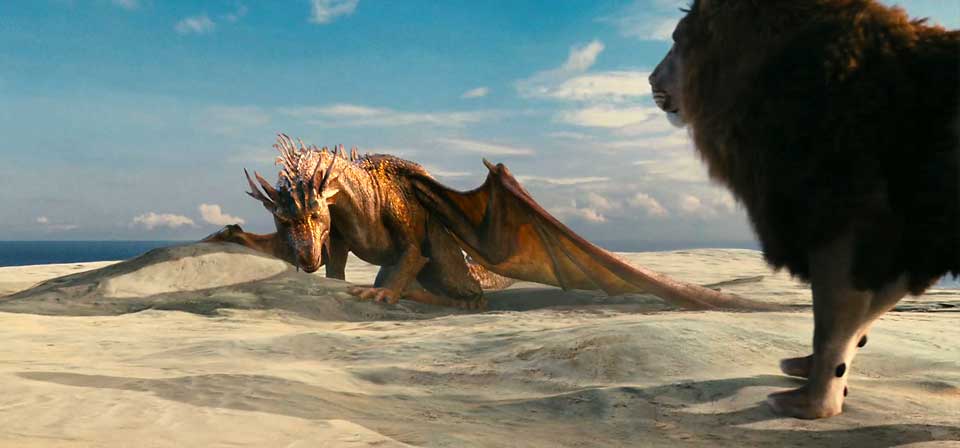
Narnian spirit: C. S. Lewis’ religious themes in the books, the films — and any films to come
With a new Blu-ray edition of The Voyage of the Dawn Treader available March 3, here’s a look back at the series so far … and a look ahead.

The Hobbit: The Battle of the Five Armies (2014)
What I can say is that The Hobbit: The Battle of the Five Armies (a title strangely stuffed with too many the’s, at a time when movie titles often dispense with articles) includes — amid overinflated spectacle and cynical fan service — some of the best stuff of any of this prequel trilogy.
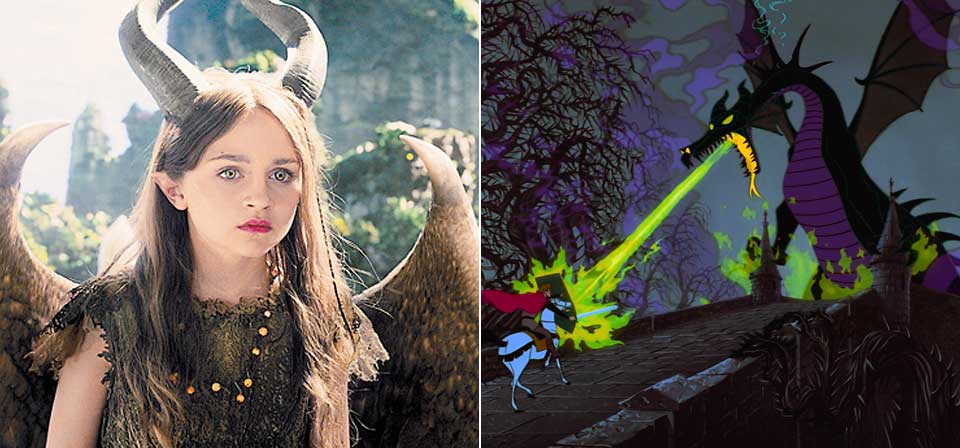
How Disney’s Maleficent subverts the Christian symbolism of Sleeping Beauty
Give me princesses like Leia from Star Wars, Merida from Brave or Tiana from The Princess and the Frog any day. But there’s a difference between creative revisionism and simple inversion.
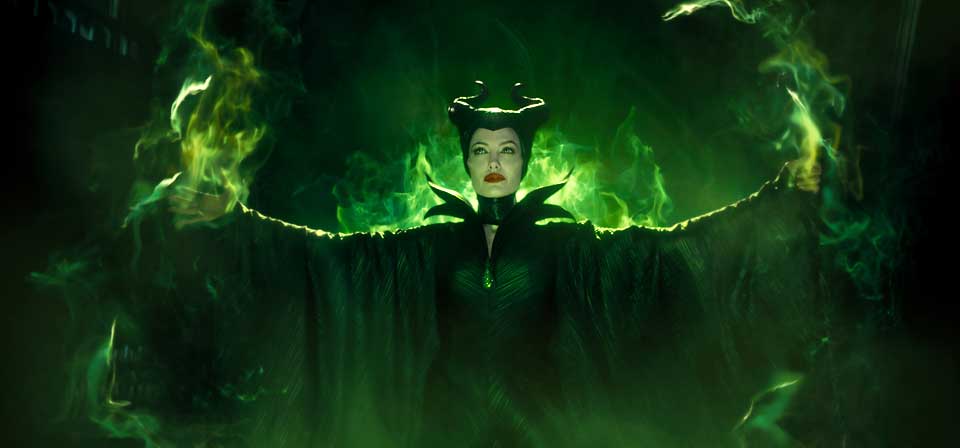
Maleficent, Rape and Sympathy for the Devil
A story like this demands to be seen through the lens of what biblical scholars call “redaction criticism,” which basically means “What was changed, added or deleted in this retelling of the story, and what do those changes tell us about the storyteller’s intentions and outlook?”
![Maleficent [video]](/uploads/articles/maleficent.jpg)
Maleficent [video] (2014)
Angelina Jolie is perfect for the part of Disney’s most iconically evil villainess. If only they’d let her play it for more than one scene.
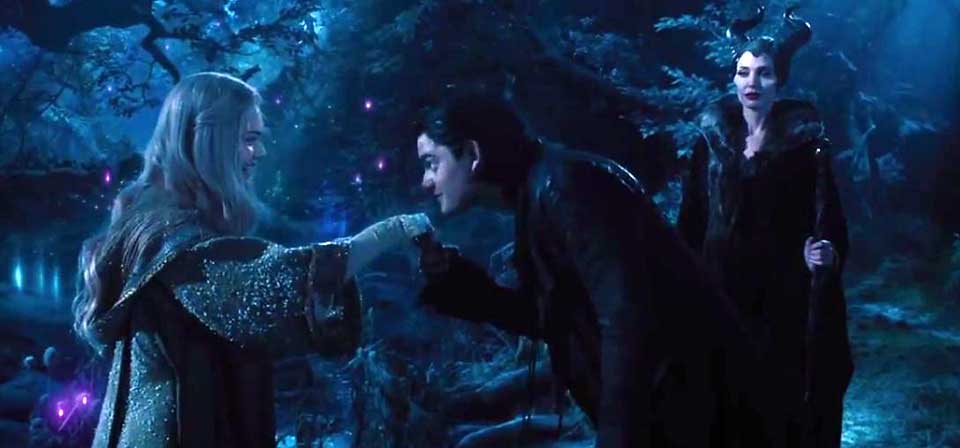
Maleficent (2014)
It’s fair to say that Disney’s Maleficent plays to an extent as warmed-over Frozen. This is not a good thing, even, I think, if you are a fan of Frozen.
The Hobbit: The Desolation of Smaug (2013)
Now, two installments into the epically epic trilogification of Tolkien’s slender fairy tale for children, it seems Jackson and company have only one abiding goal: to keep one-upping themselves with ever more preposterous action sequences, nastier violence and more inappropriate humor.
The Wizard of Oz [video]
Digitally remastered from the original negatives, painstakingly restored, The Wizard of Oz celebrates its 75th anniversary in style. Here’s my “Reel Faith” 60-second tribute to this beloved classic.
Over the Rainbow: The Wizard of Oz Turns 75
So many songs about rainbows and what’s on the other side? What was Kermit talking about? There’s only one song like that … and one movie that embodies the childhood magic Jim Henson wanted to evoke.
Epic (2013)
At its best, Epic produces images of poetic power, even grandeur … The catch is that the world the filmmakers create is far more interesting than the story they tell in it or the characters they put in it.
Oz the Great and Powerful (2013)
Oz the Great and Powerful is brightly colorful, sincere and meant for children. That doesn’t make it good, exactly, but at least it’s basically the right kind of movie, which is saying something these days, alas.
The Hobbit: An Unexpected Journey (2012)
There is an early moment in The Hobbit: An Unexpected Journey that captures the evocative poetry of Tolkien’s songs — something that The Lord of the Rings films, for all their achievements, never did. By the time the credits roll, that moment feels like it belonged in a very different film.
Brave (2012)
Among Hollywood animated films, it may be the most positive affirmation of family since The Incredibles and the best fairy tale since Beauty and the Beast.
Snow White and the Huntsman (2012)
The film transposes its story from the register of fairy tale to that of epic myth — but it’s trying for unironic epic myth, iconic good vs. iconic evil. Iconic evil: check. Iconic goodness: There’s the rub.
Mirror Mirror (2012)
What’s the last movie you saw that created an imaginary world that was actually beautiful, bursting with color and beauty and inspiration? A world that reminded you of the feeling you had as a child the first time you saw Dorothy open that door on the Technicolor world of Oz? A world you would actually like to enter and walk around in?
Wrath of the Titans (2012)
“Let’s have some fun,” says one god to another, suggesting that they “put on a show.” The moment comes late in Wrath of the Titans. Very, very late. I don’t remember the response, if any, but “Why start now?” would have been appropriate.
Harry Potter and the Deathly Hallows: Part 2 (2011)
Here at last, in the final chapter, the Harry Potter franchise rouses itself toward something approaching greatness.
Red Riding Hood (2011)
Red Riding Hood is a movie of a sort that I would very much like to see if anyone could make it, which is another way of saying that it is not that sort of movie at all. A real Hollywood fairy tale is the rarest thing in the world. Hollywood is more comfortable with myth and legend. Partly, I think, it’s a matter of scale: Mythology provides the sort of sweeping, epic scope that lends itself to big-screen Hollywood feature filmmaking. Fairy tales are smaller and more intimate, and require a lighter touch.
Treading the Dawn: Bringing Dawn Treader From Book to Film
Douglas Gresham, Walden Media’s Micheal Flaherty and C. S. Lewis scholar Devin Brown discuss the book and the film.
The Chronicles of Narnia: The Voyage of the Dawn Treader (2010)
Is it possible that the makers of The Voyage of the Dawn Treader have made the best film in the series to date while charting a course even further from the book? I think it is. Perhaps it’s even because the film diverges from the book to the extent that it does that I’m able to regard the film more for what it is than for what it isn’t.
Tangled (2010)
We really do accept as normal whatever we’re raised with, don’t we? Like, say you’ve lived all your life alone in a lonely tower in a hidden valley, and your golden hair is 70 feet long, and the only mother you’ve ever known — the only person you ever see — comes and goes using your hair as a rope ladder, and she’s never let you so much as set one foot outside, and your hair does this magic trick when you sing that — well, not to give it away, but that would just be life to you, wouldn’t it?
Harry Potter and the Deathly Hallows: Part 1 (2010)
The seventh Harry Potter movie, based on the seventh and final book, is here at last, yet the saga is not over. Extending their biggest cash cow of the millennium into next year, Warner Bros. has split Harry Potter and the Deathly Hallows in two, with Part 2 coming next year, almost a full decade after the series started.
Tales From Earthsea (2006)
Does Tales From Earthsea, the latest Studio Ghibli release brought to North American theaters by Disney, have the Miyazaki touch? Well, yes and no.
The Sorcerer’s Apprentice (2010)
The first good thing about The Sorcerer’s Apprentice is that it isn’t called The Sorcerer’s Apprentice: Oath of the Dragon Ring or The Sorcerer’s Apprentice: Nesting Dolls of Doom.
Prince of Persia: The Sands of Time (2010)
Are there five less inspiring words in the English language than “based on a video game”?
Shrek Forever After (2010)
After three Shrek films aimed squarely at adolescents, I’m mildly surprised to find that DreamWorks has made a final chapter aimed more or less at middle-aged men, and specifically husbands and fathers. You know, undemanding middle-aged men going to a Shrek movie. But still.
Clash of the Titans (2010)
The gods of classical mythology have always been selfish and capricious, but in a tempestuous, grand, passionate style, sort of like “Dallas” in heaven. In the new Clash of the Titans, the gods are about as grand and passionate as “The Simpsons,” and not a tenth as interesting. The original 1981 Clash of the Titans gave us Zeus portrayed by Laurence Olivier with a sort of dissolute patrician dignity. As played by Liam Neeson in the remake, he’s merely grumpy and vacillating. No wonder his half-human son Perseus (Sam Worthington) keeps telling anyone who will listen that he’s a man, not a god.
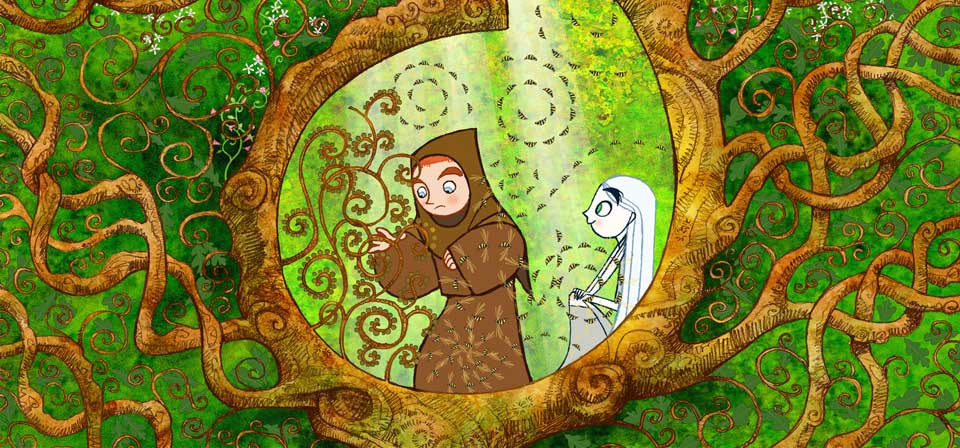
The Secret of Kells (2009)
The unknown eighth or ninth-century Irish monk who, in a playful respite from his normal work, penned in the margins of a Latin New Testament manuscript an affectionate ode in his native tongue to the mouse-catching prowess of his white cat would surely be astounded to find Pangur Bán again commemorated in pen and ink over a millennium later, romping across backgrounds that look at times like the decorative work of the monks themselves brought to life.
Alice in Wonderland (2010)
The film is actually a joint evisceration not only of Carroll’s Alice in Wonderland, but also of “Jabberwocky,” with Alice recast as (so help me) a messianic warrior-hero destined to claim the fabled “Vorpal Sword,” don shining armor, and wage an epic battle on the fated “Frabjous Day” against the forces of the Red Queen (Helena Bonham Carter) and the dragon-like Jabberwocky.
Percy Jackson & the Olympians: The Lightning Thief (2010)
Harry Potter meets Clash of the Titans in Percy Jackson & The Olympians: The Lightning Thief, the first installment of Rick Riordan’s fantasy pentalogy, directed by Chris Columbus (Harry Potter and the Sorcerer’s Stone, Harry Potter and the Chamber of Secrets). The target audience for Percy Jackson & The Olympians has never seen Clash of the Titans, of course (I mean the original Clash of the Titans, of course, not the coming remake). That they have seen Harry Potter goes without saying.
Where the Wild Things Are (2009)
The Things are potent symbols that refuse to yield to a single interpretation. Carol blends Max’s angry, destructive impulses and anxieties with Max’s mother’s concern and, dimly, the reassuring voice of the father who isn’t there. It’s not hard to see where Carol and KW’s quarrels come from, and KW’s absences are the flip side of Carol’s surrogate fatherhood, but Max’s sister is also in KW, off cavorting with her new friends and leaving Carol, and thus Max, in the lurch.

Ponyo (2008)
Although Ponyo seems as disjointed and free-floating as Howl’s Moving Castle, somehow the younger milieu here makes it more acceptable. Or maybe it’s just that there’s more here to latch onto emotionally.
Harry Potter and the Half-Blood Prince (2009)
Potter fans, whether they’ve kept up with the books or not, will find that the latest film continues the trajectories of recent installments — it’s darker, more tragic and more romantic — while setting the stage for the final battle, now planned for two movies.
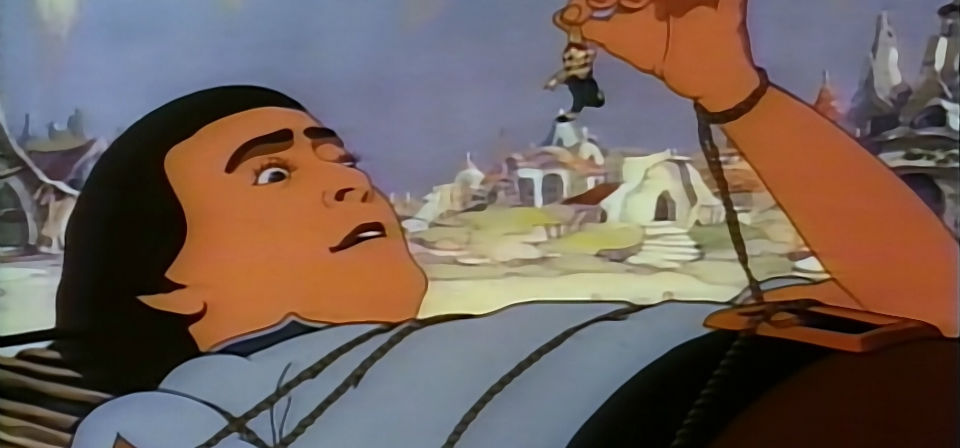
Gulliver’s Travels (1939)
Coming on the heels of Disney’s landmark Snow White, Gulliver’s Travels, from rival Fleischer Studios, is an intriguing case study in the elusive gap between decent work by talented animators and a successful and satisfying film.
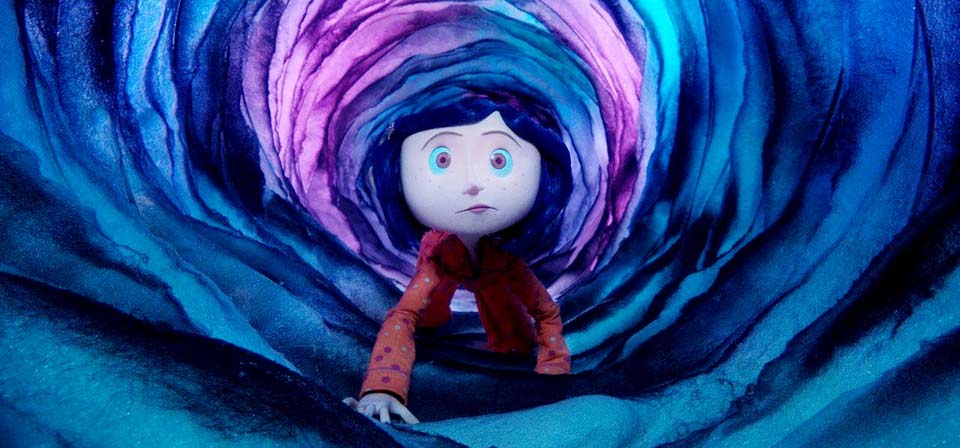
Coraline (2009)
With its dark tale of changeling parents and imprisoned souls, Coraline comes closer to the spirit of the traditional European fairy tale than perhaps any other film, animated or otherwise, in recent memory.
The Spiderwick Chronicles (2008)
The Spiderwick Chronicles is a smart, scary fantasy family thriller that offers depth and meaning in a genre littered with mere competent entertainment. Where films like Zathura and Night at the Museum offer roller-coaster excitement but little more, The Spiderwick Chronicles is actually about something.
The Chronicles of Narnia: Prince Caspian (2008)
If the first Narnia film got perhaps two-thirds of Lewis’s intended meaning, Caspian is lucky if it gets a quarter. … The upshot is that Caspian is a good-looking fantasy film with some appealing eye candy and comparatively little to do with the book, beyond basic themes of good versus evil and rather generic faith. On that level, if you can put Lewis out of your mind, it’s a pretty good ride.
The Golden Compass (2007)
Overarching all of this is the depraved caricature that the books call “the Church” or “the Magisterium,” but is referred to in the film solely by the latter, less familiar term, which many viewers won’t recognize as a real-world reference to the teaching authority of the Catholic Church. Obsessed with preserving “centuries of teaching” from the dangers of “heresy” and “freethinkers,” by deadly means if necessary, Pullman’s Magisterium is not just oppressive but essentially equivalent to the forces of darkness, akin to Tolkien’s Mordor or the Empire in Star Wars.
The Dark Crystal (1982)
Imaginatively ambitious and often visually engaging, The Dark Crystal resolutely remains a distant, uninvolving experience. The filmmakers’ attention seems occupied by the technical challenges of bringing this fictional world to life; characters and emotions, even by the archetypal standards of high fantasy, never come to life, and the overarching mythology seems too self-consciously contrived rather than taking on a mythic reality of its own.

Labyrinth (1986)
Despite some imaginative visuals, such as the Escher-inspired omnidirectional castle at the finale, Labyrinth suffers from a distinct lack of charm, with poorly thought-out characters, limp plotting and a limp climax. Although positioned as a coming-of-age tale, Labyrinth indulges rather than challenges Sarah’s heroic-princess fantasies, with a made-to-order adversary whose whole world, for no very obvious reason, seems to revolve around Sarah.
Harry Potter and the Order of the Phoenix (2007)
The level of magical eye candy is noticeably lower than previous installments… On the other hand, Ron and Hermione, though probably short-changed compared to the book, are better used here than in the previous film. Best of all is Harry’s leading role in Dumbledore’s Army, marking a major advance in proactive engagement from a protagonist who for too much of the first four chapters has been largely passive.
Pirates of the Caribbean: At World’s End (2007)
If Dead Man’s Chest was inspiration gone amok, At World’s End is more — much, much, much more — of the same, only without the inspiration. In every respect it outdoes its predecessor, except in charm, entertainment and fun. Add Pirates of the Caribbean to the roster of franchises foundering on the rocks the third time out.
Shrek the Third (2007)
Shrek the Third continues the deliberate bad taste that is the franchise’s hallmark, with the usual hit-and-miss results… What’s missing is the heart that leavened the first two films.
Bridge to Terabithia (2007)
As with Walden’s recent Charlotte’s Web, the key points of the book are here, for the most part, but hampered by irrelevant “family film” clutter — in this case unmagical fantasy sequences jarringly at odds with the story’s most significant plot point.
Happily N’Ever After (2007)
Ella’s so blindly devoted to the Prince, and so convinced that he’s the one to save the day, that she seems just another swooning groupie rather than a worthy heroine. If she hasn’t any more sense than that, what exactly does Rick see in her? What does that say about him?

My Neighbor Totoro (1988)
How can I describe the inexplicable power of My Neighbor Totoro, Hayao Miyazaki’s timeless, ageless family film? It is like how childhood memories feel, if you had a happy childhood — wide-eyed and blissful, matter-of-factly magical and entrancingly prosaic, a world with discovery lurking around every corner and an inexhaustible universe in one’s backyard.
Lady in the Water (2006)
Why, I haven’t come across a fairy-tale premise calling for such childlike wonder and acceptance since the taxation of trade routes was in dispute and the greedy Trade Federation set up a blockade around the planet Naboo.
Superman II (1981)
Superman II isn’t perfect, but in the annals of comic-book movies it remains an indispensable touchstone.
The Chronicles of Narnia: The Lion, the Witch and the Wardrobe (2005)
One of the most magical effects in Andrew Adamson’s The Lion, the Witch and the Wardrobe isn’t rippling computer-generated fur, ice castles, or battle scenes. It’s the wide-eyed wonder and delight on the face of young Lucy Pevensie (Georgie Henley) as she passes beyond the wardrobe for the first time into the winter wonderland of the Narnian wood.
Harry Potter and the Goblet of Fire (2005)
The fourth of seven projected films based on J. K. Rowling’s ongoing adventures of the boy wizard, Harry Potter and the Goblet of Fire represents the midpoint of the series and of Harry’s schooling at Hogwarts School of Wizardry and Witchcraft.
Cinderella (1950)
Coming in the wake of a string of early classics — Snow White and the Seven Dwarfs, Pinocchio, Fantasia, Dumbo, Bambi — Disney’s Cinderella represents, alas, the early stages of Disney-itis.
Corpse Bride (2005)
As imagined by Tim Burton in stunning, wildly stylized stop-motion animation overtly reminiscent of The Nightmare Before Christmas yet technically far beyond it, this macabre fairy tale becomes, variously, a poignant meditation on the daunting weightiness of the vows of marriage, a raucous danse macabre in jumping jazz rhythms and florid colors, a visually rich celebration of Edward Gorey Gothic-Victorian and Charles Addams grotesque, and, perhaps most surprisingly, a touching portrait of tragedy, doomed love, empathy, and sacrifice.
Willy Wonka & the Chocolate Factory (1971)
Along with Chitty Chitty Bang Bang and The 10,000 Fingers of Dr. T, Willy Wonka illustrates the distinct possibility of telling a fairy-tale like story about a child transported to a fantasy wonderland, with brightly costumed little people singing and dancing and strange dangers to be negotiated, yet winding up with a film that is more a fond tribute to "pure imagination" than a triumph of it.
Charlie and the Chocolate Factory (2005)
Tim Burton’s Charlie and the Chocolate Factory is enough to make any fan of Roald Dahl’s most beloved novel cry — with delight at all the film gets so magically right, and with frustration that in spite of that the film is still nearly ruined by Burton’s obsessions and a spectacularly miscalculated performance by star Johnny Depp.
Star Wars: Episode II - Attack of the Clones (2002)
It doesn’t help that this is now the second Star Wars movie in a row in which the "wars" alluded to in the series title are still basically in the future (one climactic skirmish aside). Lucas should never have gotten bogged down in political debate, let alone given two whole films of it.
Star Wars: Episode I - The Phantom Menace (1999)
It’s not just that the banter and camaraderie of Luke and Han and Leia was so much more fun than the often wearying interactions of Anakin and Amidala and young Obi-Wan — though that’s part of it. More importantly, the stories themselves largely lack the strong center of good versus evil that was the heart of the original trilogy.
Star Wars: Episode III – Revenge of the Sith (2005)
Crippled as he is by the decisions of the first two films, Lucas still manages to invest the final chapter of his sprawling space opera with the grandly operatic spirit of the original trilogy. It’s still cornball, yes, and with all the usual weaknesses. But Episode III at last has heart.
Star Wars [Episode IV – A New Hope] (1977)
An orphaned hero. An imprisoned princess. A wise old hermit. A magic sword. A fearsome dark lord. Such conventions are the stuff of myth and romance — yet, inexplicably, the first Hollywood film to give these mythic archetypes their due was not some Arthurian romance or epic costume drama.
Star Wars: Episode VI – Return of the Jedi (1983)
Thematically, where the first Star Wars movie offered a simple vision of good triumphing over evil, and The Empire Strikes Back expressed the problem of evil and the necessity of sacrifice, Return of the Jedi tackles nothing less than resisting temptation, compassion for enemies, and the possibility of redemption for even the most evil.
The Lord of the Rings: The Return of the King (2003)
It’s hard to overstate the soaring achievement of Peter Jackson and company in The Return of the King, the third and final chapter of their historic adaptation of The Lord of the Rings. To call it the grandest spectacle ever filmed is no exaggeration; it may also be the most satisfying third act of any film trilogy, completing what can now be regarded as possibly the best realized cinematic trilogy of all time.
The Princess Bride (1987)
Rob Reiner’s great cult classic The Princess Bride is one of those rare satiric gems, like The Court Jester and Galaxy Quest, that doesn’t just send up a genre, but honors it at the same time, giving us the excitement and pleasure of the real thing as well as the laughs of a comedy.
Lemony Snicket’s A Series of Unfortunate Events (2004)
If you prefer movie reviews about pleasant and uplifting films in which goodness is suitably rewarded, evil is suitably punished, and children are not placed in excessive peril or disagreeable circumstances, you may wish to read some other review.
Peter Pan (1953)
For millions of children and adults, Disney’s Peter Pan is THE Peter Pan, as well as a defining moment in Disney animation, giving the studio its logo mascot, Tinker Bell.
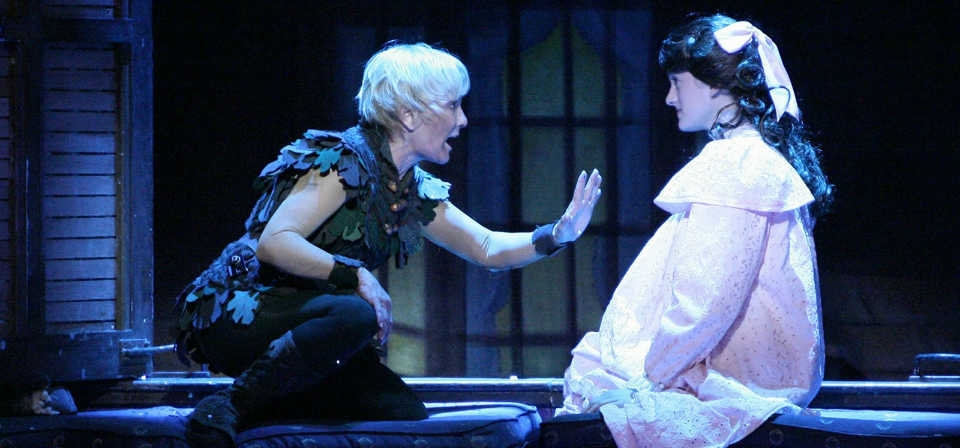
Peter Pan (2000)
It may seem heresy to baby boomers with fond memories of Mary Martin singing and flying on NBC, but this beautifully produced A&E restaging of the musical, starring gymnast-turned-actress Cathy Rigby, eclipses the beloved 1960 Martin kinescope in almost every way.
Peter Pan (2003)
One of the functions of fairy tales is to reflect in an imaginative way truths that, were they presented literally, children might not be ready for, but which they can on some level apprehend and assimilate in this form, and be in some way more prepared emotionally for life. Fairy tales help children grasp what life expects of them, what dangers, adversities, and opportunities they will face. From them children can begin to learn the prudence to avoid the dangers, the fortitude to face the adversities, and the enterprise to seize the opportunities.
Peter Pan (1924)
Continuing a stage convention that would extend to subsequent film versions, Pan is played by a petite woman, teenaged Betty Bronson (hand-picked by Barrie himself), who brings tomboyish energy and dash to the role. Ernest Torrence sneers with foppish malevolence as Captain Hook, and Mary Brian makes a charming Wendy. The stage flying effects work just as well onscreen, and George Ali reprises his delightful costumed animal performances from the stage as Nana and the crocodile.
The Polar Express (2004)
Van Allsburg’s simple story of a nameless, doubting boy who rides a magical train to Santa’s home at the North Pole is fleshed out by introducing us to a few of his young fellow passengers, and also by making the train ride and the visit to the North Pole far more eventful. These additions are fairly consonant with the spirit of Van Allsburg’s work; almost any two minutes of The Polar Express could be a scene in a Van Allsburg story, even if they could never all be squeezed into a single book. Fans of the writer-artist may be pleased to find The Polar Express about as faithful an adaptation of the author’s work as could be imagined in a feature film.
Kiki’s Delivery Service (1989)
A loosely structured coming-of-age story, Kiki’s Delivery Service features one of Miyazaki’s most personable protagonists, a delightful cast of supporting characters, and a rambling, episodic storyline full of charming incident and irresistible imagery.
The Thief of Bagdad (1940)
In this version, the romantic lead who falls in love with the princess is not the titular thief, but a beggar named Ahmad (John Justin) who is actually the rightful king of Bagdad, but has been deposed by his treacherous Grand Vizier Jaffar (Conrad Veidt). The thief, on the other hand, is a mischievous, resourceful lad named Abu (Sabu).
The Thief of Bagdad (1924)
Rivaled only by the awesome Babylonian segments of D. W. Griffith’s Intolerance, Douglas Fairbanks’ lavish, extravagant The Thief of Bagdad ranks as the very pinnacle of silent-era spectacle.
Sinbad: Legend of the Seven Seas (2003)
With its swashbuckling action and blend of traditional and 3D computer animation, Sinbad most resembles Disney’s Treasure Planet — yet for once DreamWorks handily outdoes its archrival, with bravura action set pieces, a surprisingly complex romantic triangle, and an even more remarkably thoughtful exploration of moral issues and character.
Ella Enchanted (2004)
Borrowing a page from Sleeping Beauty, therefore, Levine came up with the central dramatic conceit of her Newbery Honor-award winning book, Ella Enchanted: From her infancy Ella has been under a fairy curse (here bestowed in cluelessness rather than malice) obliging her to obey any imperative statement directed at her, from anyone. The moral of the story, in the author’s own words in interviews and letters to readers, is: "Don’t be too obedient!"
Toy Story 2 (1999)
It’s the best kind of sequel, the kind that neither repeats the original nor merely adds to it, but lovingly builds upon it and goes beyond it into narrative and emotional territory no first film could reach.
Toy Story (1995)
Toy Story, the first-ever fully computer-animated feature and the film that put Pixar Studios on the map, is more than a technical tour de force. It’s moviemaking alchemy — a breathtakingly perfect blend of wide-eyed childhood wonder and wry adult humor, yesteryear nostalgia and eye-popping novelty, rollicking storytelling and touchingly honest emotion.
Harry Potter and the Prisoner of Azkaban (2004)
Where its predecessors felt a bit padded and overlong, The Prisoner of Azkaban feels incomplete and overly edited. If the first two films could easily have been tightened up by a half-hour or so, this one left me wishing for the first time that there were an “extended edition” DVD coming, as with the Lord of the Rings films.
Harry Potter and the Chamber of Secrets (2002)
Harry Potter is back, and in this second outing the stakes are higher, the themes darker, the Malfoys nastier, the action grander, the monsters scarier, the gross-outs ickier, the climax stronger, and the movie longer.
Harry Potter and the Sorcerer’s Stone (2001)
Fans of the books will be gratified by a warm rush of recognition at every turn. From the growing anticipation as the mysterious invitations to Harry at the Dursley’s begin their inexorable multiplication, to Robbie Coltrane’s comforting performance as the genial giant Hagrid, to the dazzling Hogwarts grounds, to the exhilarating speed and excitement of Quidditch, the book’s main pleasures have been expertly realized.
Shrek 2 (2004)
If Pixar’s Toy Story movies connect with the child in all of us, DreamWorks’ Shrek pictures are aimed squarely at our inner adolescent. I suspect I may be more in touch with my inner child than my inner adolescent.
Shrek (2001)
Loosely based upon a story by children’s author William Steig (Sylvester and the Magic Pebble), Shrek is a satiric, updated fairy-tale love story, sort of like The Princess Bride, if André the Giant had been the hero, and had worn Lou Ferrigno body paint. And if Princess Buttercup did Matrix-style wire-fu and knocked out bad guys.
Hellboy (2004)
The best thing about Hellboy is Hellboy. And he’s a demon.
The Achievement of Peter Jackson’s The Lord of the Rings
As Fritz Lang’s Metropolis was the first great science fiction film and Ford’s Stagecoach was perhaps the first great Western, The Lord of the Rings is the first great cinematic achievement of its kind - a genre that might be described as epic Western mythopoeia, but is often popularly (if imprecisely) called "fantasy" or "swords and sorcery."
The Hobbit (1977)
Character design is a mixed bag: Gandalf looks very much himself, but Bilbo is rather cherubic, and the dwarves are uninspired. Worse is Gollum, disappointingly bloated and stiff rather than agile and emaciated, and the dreadfully goblin-like Wood-Elf King. (On the other hand, the Elf-lord Elrond, with his distinguished features and strange crown-halo, is far preferable to Bakshi’s dismally graceless version of the same character.)
The Lord of the Rings (1978)
Notwithstanding this and other weaknesses, this Lord of the Rings is in some respects quite impressive and remains worth a look, especially for Tolkien fans, and perhaps younger viewers not quite old enough for Peter Jackson’s more intense adaptation — though even the Bakshi is darker and more intense than most cartoons. (Younger viewers might also be interested in the animated Rankin-Bass versions of The Hobbit and The Return of the King.)
The Return of the King (1980)
The film hits the most critical plot points, but is clearly aimed at the younger set, with little to interest even the most avid adult Tolkien and/or animation buff. Unfortunately, this style works even less well here than in The Hobbit, which really is a children’s story. Tolkien’s Lord of the Rings is a much more adult work, but Rankin-Bass essentially makes a kid movie out of it. Even so, for kids too young for the Jackson or even Bakshi versions, the Rankin-Bass cartoons might be just the ticket.
Big Fish (2003)
Like Haley Joel Osment in Secondhand Lions wanting to know the truth about the tales of his uncles’ alleged exploits, Ed’s son Will (Billy Crudup) wants to know whether his dying father really was a Big Fish in a small pond, or whether his father’s tales were just Big Fish stories. Big Fish also echoes Secondhand Lions by ending with a funeral scene that provides some answers as Will finally meets certain individuals from his father’s past.
Return to Never Land (2002)
Return to Never Land is Peter Pan Lite, if I can say that without conjuring images of low-fat peanut butter.
Elf (2003)
(Written by Jimmy Akin) Elves love to tell stories, or so Papa Elf (Bob Newhart) tells us at the beginning of this elf story. It is an unusual tale in that it is the other side of all the changeling stories that have circulated in folklore for centuries. Instead of being the tale of a fairy raised among mankind, it is the story of a human raised among elves.
The Lord of the Rings: The Two Towers (2002)
From the very first sequence of Peter Jackson’s The Two Towers — a bravura opening that stunningly recalls and continues a central sequence from The Fellowship of the Ring — we feel that we’re in good hands. It’s a promise the subsequent three hours deliver on imperfectly.
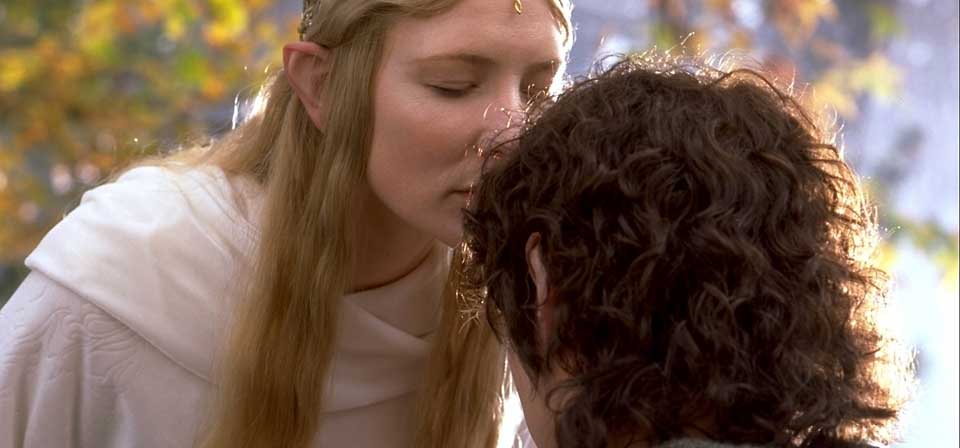
Faith and fantasy: Tolkien the Catholic, The Lord of the Rings, and Peter Jackson’s film trilogy
J. R. R. Tolkien once described his epic masterpiece The Lord of the Rings as "a fundamentally religious and Catholic work." Yet nowhere in its pages is there any mention of religion, let alone of the Catholic Church, Christ, or even God. Tolkien’s hobbits have no religious practices or cult; of prayer, sacrifice, or corporate worship there is no sign.

The Lord of the Rings: The Fellowship of the Ring (2001)
There can be no more fitting tribute to Peter Jackson’s The Fellowship of the Ring than to apply to it the words with which C. S. Lewis acclaimed the original book when Tolkien first wrote it: “Here are beauties that pierce like swords or burn like cold iron; here is a [film] that will break your heart.”
The Chronicles of Narnia (1988‑1990)
Beautiful, rugged UK landscapes, splendid old castles and other shooting locations, and some fairly impressive sets help create a sense of authenticity. At the same time, with the earlier episodes especially limited by modest production values, rudimentary special effects, and uneven acting, the Chronicles can’t be held even to the standard of such American TV productions as the Merlin and Arabian Nights miniseries.
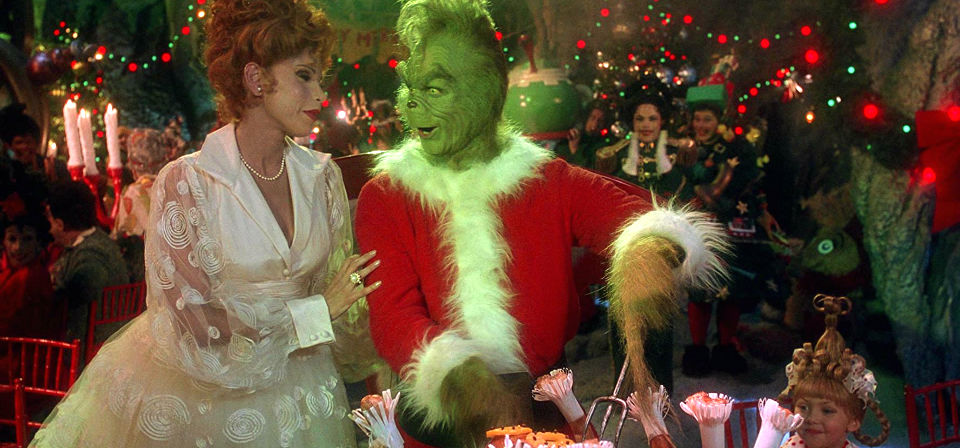
How the Grinch Stole Christmas (2000)
By the time that you read this short essay of ours / The Grinch will have made ten squintillion more dollars! / The people have spoken! The Grinch is a hit! / So who cares if some critic writes critical crit?
Pirates of the Caribbean: The Curse of the Black Pearl (2003)
The most remarkable thing about Pirates of the Caribbean: The Curse of the Black Pearl is neither Johnny Depp’s mesmerizing performance, nor ILM’s literally eye-popping skeletal ghost-ship crew, but the sheer fact that the movie works at all.
The Santa Clause 2 (2002)
Like those MasterCard ads that, while admitting that “there are some things that money can’t buy,” still manage to suggest that even these things are somehow among the many benefits of using MasterCard, The Santa Clause 2 is strangely reticent about the idea that Christmas is ultimately about anything other than presents from the red-suited guy.

Sleeping Beauty (1959)
A worthy successor to the early classics Snow White and Pinocchio, Sleeping Beauty is the one great fairy-tale adaptation of Disney’s post-war period, outshining Cinderella and unrivaled until 1991’s Best-Picture candidate Beauty and the Beast.
Northfork (2003)
With its surreal, dreamlike ambiance, juxtaposition of transcendent and mundane elements, lyrical imagery, and contemplative pacing, Northfork alternately evokes comparisons to such films as Wim Wenders’ Wings of Desire, Malick’s Days of Heaven, and certain films of Tarkovsky, Bergman, David Lynch, and Carl Dreyer.
The Emperor’s Club (2002)
He’s overly pedantic: Instead of merely urging a student to stay off the grass, he exhorts, "Walk where the great men who have gone before you have walked" — not just because it’s good for the grass, but "because it’s good for you."
Blackbeard’s Ghost (1968)
Highlights include an ominous retelling of the story of Blackbeard’s curse and a slapstick scene pitting the heroes against the gangsters. Undeniably silly and somewhat dated, Blackbeard’s Ghost remains harmless, modestly entertaining family fare.
The Emperor’s New Groove (2000)
The Emperor’s New Groove is really about another new groove — Disney animation’s. By 2000, the old Disney-as-usual wasn’t selling any more, and Disney was ready to begin trying new things.
Tuck Everlasting (2002)
The story, originally set in 1880 but moved to 1914 for the movie, concerns a sheltered young girl from a well-to-do family who is called "Winifred" by her overprotective parents and grandmother, and might be called "Winnie" by her friends if she had any. Winnie (Alexis Bledel of TV’s "Gilmore Girls") is so timid that when she decides to run away from home, she heads for the family-owned woods adjacent to her house, never actually setting foot off her parents’ property.
Harry Potter vs. Gandalf
What defines morally acceptable use of good magic in fiction? Where, and how, do we draw the line? How do we distinguish the truly worthwhile (Tolkien and Lewis), the basically harmless (Glinda, Cinderella’s fairy godmother), and the problematic or objectionable (“Buffy,” The Craft)? And where on this continuum does Harry Potter really fall?
Star Wars: Episode V – The Empire Strikes Back (1980)
The Empire Strikes Back is the backbone of the Star Wars saga. It takes the story and themes of the first film into deeper waters.
Star Wars [Episode IV – A New Hope] (1977)
(Review by Jimmy Akin) Like earlier pulp films, Star Wars draws on mythic and fairy-tale archetypes: a young orphan-hero; a mysterious wizard-mentor; a fearsome dark lord; a magical sword; a princess held prisoner; a gallant rescue mission. Yet on a deeper level, Star Wars is more convincing as a myth or fairy tale in its own right.
Pleasantville (1998)
The film’s central conceit is that the process of colorization is spread through acts of exploration or self-discovery by which people step outside their customary ways into a new world. In the black-and-white world of the 1950s TV sitcom, one common means of transformation is sexual activity, which didn’t exist in "Pleasantville" until the teenagers (Jennifer in particular) introduced it. When Jennifer gently explains the facts of life to her sitcom mother (Joan Allen), the latter is certain that her prosaic husband (William H. Macy) could never be induced to engage in such activity; so Jennifer proceeds to coach her mother (offscreen) on how to commit self-abuse. The mother then proceeds to do so, with such explosive results that by a kind of sympathetic magic the tree in the front yard bursts into flame.
What Women Want (2000)
Women are from Venus; men are from the gutter.
The Nightmare Before Christmas (1993)
Despite the macabre humor, there’s something touchingly innocent about Halloweentown. Its inhabitants live for fear and thrills, yet there’s no real malice in any of them — with the exception of a sort of Halloween outlaw named Mr. Oogie Boogie and his three young protégés.
Monsters, Inc. (2001)
The world of Monsters, Inc. is a more artificial and contrived affair than the Toy Story world, and something of the figure of the Monster in myth and fairy tale and imagination has been lost. Yet there’s also a slyly satiric point: Childhood fears aren’t what they used to be.

Fantasia (1940)
If Fantasia failed to spark a hoped-for entertainment revolution, its achievement is all the more starkly singular. A joyous experiment in pure animation, an ambitious work of imaginative power, a showcase of cutting-edge technique, and a celebration of great music, it is without precedent and without rival. I’ve watched it far too many times to count, and I have yet to begin tiring of it.
Being John Malkovich (1999)
The malleable, plastic vision of human nature in general and of sexuality in particular, in which gender and relationships shift and merge and re-form like blobs of goo in a lava lamp, represents a profoundly anti-human fantasy and an affront to personal dignity.
Atlantis: The Lost Empire (2001)
Directors Gary Trousdale and Kirk Wise (Beauty and the Beast) keep things moving fast enough to keep them from getting boring, and there are a few laughs along the way. Yet what could have made adequate summer entertainment for older kids and parents with low expectations is ultimately undone by pervasive echoes of New-Age pop spirituality and neopaganism in the film’s imagery and themes.
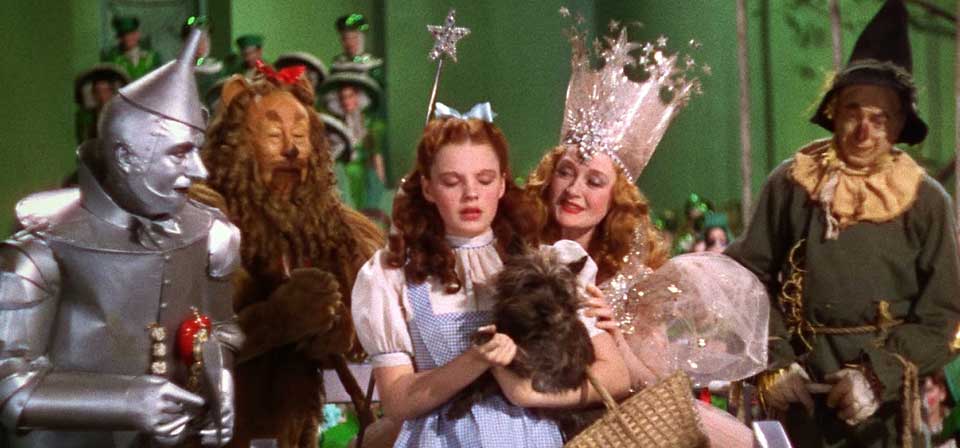
The Wizard of Oz (1939)
The Wizard of Oz is one of a very few shared experiences that unite Americans as a culture, transcending barriers of age, locale, politics, religion, and so on. We all see it when we are young, and it leaves an indelible mark on our imaginations. We can hardly imagine not knowing it. It ranks among our earliest and most defining experiences of wonder and of fear, of fairy-tale joys and terrors, of the lure of the exotic and the comfort of home.
![The Nutcracker and the Four Realms [video]](/uploads/articles/nutcrackerandthefourrealms-vid_tmNTSAF.jpeg)
The Nutcracker and the Four Realms [video]
I can’t believe I’m saying this, but here is a movie that kind of makes me want to revisit The Sorcerer’s Apprentice. This is not a good sign.
Star Wars: Episode V – The Empire Strikes Back (1980)
(Review by Jimmy Akin) In the process of adding new depth to familiar subjects, the film often takes unexpected turns. One of the subtlest of these — so subtle that it tends not to be noticed by the audience — involves the mythic dimensions of Luke’s transformation from backwater farmboy to mystical adept.
Star Wars: Episode VI – Return of the Jedi (1983)
(Review by Jimmy Akin) In the end, Star Wars reveals itself to be not just the most ambitious science-fiction epic brought to the big screen but a story expressing the importance of family and love, the danger of moral corruption, and the possibility moral redemption.
Recent
- Benoit Blanc goes to church: Mysteries and faith in Wake Up Dead Man
- Are there too many Jesus movies?
- Antidote to the digital revolution: Carlo Acutis: Roadmap to Reality
- “Not I, But God”: Interview with Carlo Acutis: Roadmap to Reality director Tim Moriarty
- Gunn’s Superman is silly and sincere, and that’s good. It could be smarter.
Home Video
Copyright © 2000– Steven D. Greydanus. All rights reserved.